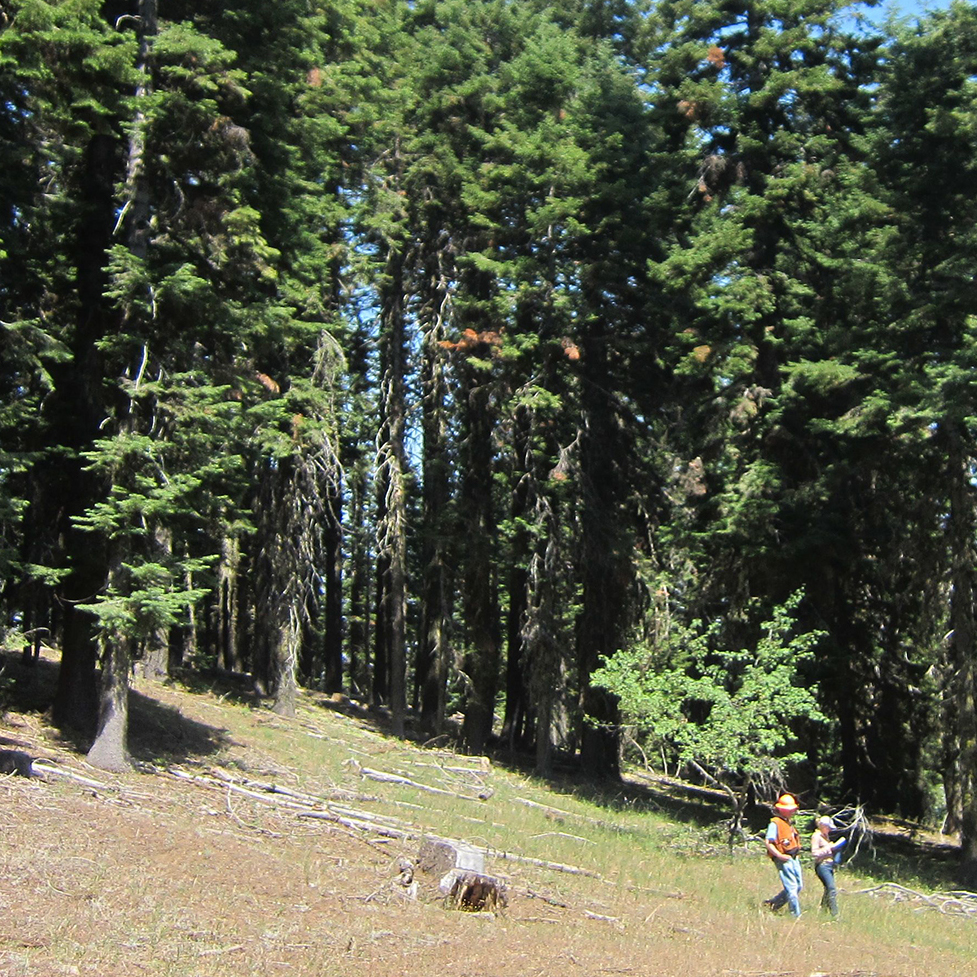Working Forest Conservation Easements 101
Conserving a legacy of forest stewardship: How we do it
Working forest conservation easements (WFCEs) provide private landowners the means to permanently conserve their forests for a variety of public benefits while keeping them in private ownership and productive forestry. The Pacific Forest Trust pioneered this innovative form of the traditional conservation easement to help landowners meet their twin goals of economic production and resource protection. Here are a few facts about how conservation easements work and what working forest conservation easements do for landowners and the public.
What are Conservation Easements?
Conservation easements embody a landowner’s vision for the lasting stewardship of a property. A working forest conservation easement is an effective, cooperative legal agreement that permanently protects the important natural values of a forest property—fisheries, water supplies, wildlife habitat, and open space—while ensuring good forest management and sustainable flows of the wood products we need.
This deeded agreement is voluntarily placed on a property to help realize a forest owner’s goals to restrict development, protect significant environmental resources, and support sustainable economic uses—benefits of enormous public value. Forming a lasting legacy of conservation, these restrictions stay with the property even if it changes hands. A land trust like the Pacific Forest Trust, selected by the landowner, becomes responsible for monitoring compliance with the easement and ensuring that its provisions are being honored.
Why place a Working Forest Conservation Easement on your property?
The reasons landowners grant conservation easements are varied—but the decision is always rooted in a person’s relationship to their land. The goals for a property may be focused on commercial timber production, or nurturing habitat for wildlife, or providing a family retreat. For many people, their forestland provides multiple benefits. A conservation easement can help achieve any and all of these goals by stripping off unwanted uses and guiding future management to achieve desired results.
When landowners make this enduring commitment to conservation, they can be compensated for protecting the many public benefits natural landscapes provide. The value of the conservation easement is readily appraised, taking into consideration foregone revenue from restrictions on development or timber harvest. Based on this valuation, a landowner can garner potentially significant income and estate tax benefits by donating the easement to a land trust like PFT. (Find out more about Pacific Forest Trust’s conservation projects.) Or, an owner may be paid for the conservation easement, usually from funds available through local, state or federal conservation programs. A landowner may also make a partial donation or “bargain sale,” receiving some value in cash and gifting the remainder; an approach that is seeing increasing use, this provides immediate cash flow combined with long-term tax savings.
Perhaps most important, a conservation easement can be essential for passing land on to the next generation. By removing the land’s development potential, the easement lowers its market value, which in turn lowers estate tax. Whether the easement is donated during life, by will, or during the estate settlement, it can make a critical difference in the heirs’ ability to keep the land intact.
At the same time, the public gains immensely valuable, lasting conservation of forests at the fraction of the cost of public ownership, making conservation easements an efficient use of tax dollars to sustain wood, water, wildlife and our quality of life.
Conservation Easements provide added value for stewardship.
Many landowners manage their forests excellently, voluntarily investing in the restoration and protection of habitat and water quality to high standards. This kind of forestry can be embodied in the easement’s terms and its value reflected in the appraisal used for the gift or sale of the easement.
Further, working forest conservation easements carry the potential for helping meet and exceed the requirements of federal and state environmental regulations, including the Endangered Species Act and Clean Water Act, potentially forming the basis for long-term and more site-specific timber harvest permits. For instance, the Butte Creek Meadows Working Forest entered into a Safe Harbor Agreement for protection of Northern Spotted Owls with the U.S. Fish and Wildlife Service that provides it with greater operational flexibility and regulatory certainty. Conservation easements can also secure lasting climate benefits and become part of a forest carbon project.
Resources
Download this fact sheet as a PDF.
If you’re considering donating a working forest conservation easement, please consult your financial advisor about the potential income and estate tax benefits. For more information, please contact PFT Director of Conservation and Stewardship, Brian Lawson, at brian@pacificforest.org.
Find out more from the Land Trust Alliance: www.landtrustalliance.org/conservation/landowners

